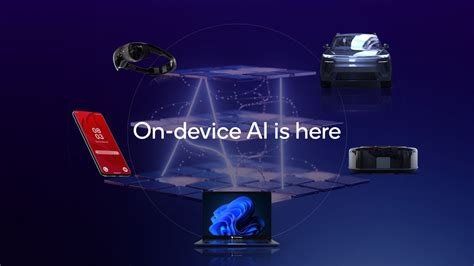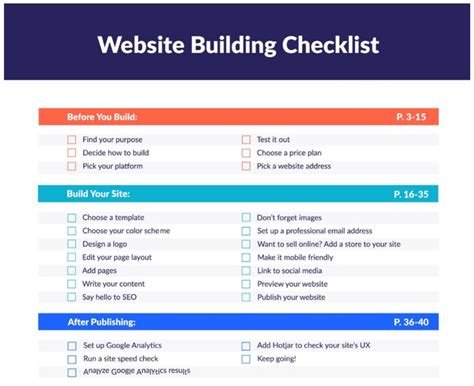The article explores how next-generation devices are transforming mobile experiences, significantly impacting daily life by enabling users to interact seamlessly with technology. Next-generation devices enhance mobile connectivity through faster, more reliable networks, facilitating communication and access to information. It also discusses the benefits and drawbacks of modern mobile technologies, highlighting improvements such as increased efficiency alongside challenges like privacy concerns. To fully embrace these advancements, the article provides actionable steps for adopting next-generation mobile devices, ensuring users can make informed choices in an ever-evolving technological landscape. Overall, it emphasizes the transformative power of next-generation technology in shaping how we engage with our mobile environments.
The Impact Of Next-Generation Devices On Daily Life
The emergence of next-generation devices has profoundly altered the way we engage with our surroundings, fundamentally reshaping daily routines. These technological advancements not only enhance the user experience but also streamline various tasks that were once time-consuming. As a result, individuals are experiencing increased convenience and efficiency in their daily lives, leading to a transformational shift in how we perceive technology.
Among the various improvements provided by how next-generation devices impact our lives, connectivity plays a pivotal role. With enhancements in wireless technology, users now experience faster internet speeds and more reliable connections than ever before. This improvement allows people to maintain constant communication with family, friends, and colleagues, fostering stronger relationships and a more integrated social experience.
Explore the Key Features of Next-Generation Devices
- Ultra-fast processing speeds for seamless multitasking
- Advanced battery life ensuring prolonged usage
- Intuitive user interfaces for enhanced accessibility
- Improved camera technology for high-quality imaging
- Robust security features to protect user data
- Integration of artificial intelligence for personalized experiences
Moreover, the accessibility of advanced applications and services has skyrocketed, opening doors to new opportunities in personal growth and learning. For instance, e-learning platforms have become significantly more engaging and interactive, allowing individuals to acquire new skills at their own pace while utilizing the latest technological advancements. This shift not only empowers individuals but also drives innovation across various sectors, further enhancing overall productivity.
In conclusion, as next-generation devices continue to evolve, their impact on daily life is becoming increasingly evident. By reimagining how we connect, communicate, and access information, these devices are paving the way for a more efficient and connected society. Understanding the changes brought about by how next-generation devices allows individuals and businesses to fully harness their potential, driving progress in everyday activities.
How Next-Generation Devices Are Enhancing Mobile Connectivity
With the advent of How Next-Generation devices, mobile connectivity is witnessing a revolutionary transformation. These advancements are not only enhancing the capabilities of mobile devices but also facilitating a more reliable and faster connection for users worldwide. As technology evolves, the integration of sophisticated features in smartphones and tablets is leading to improved user experiences and efficiency in communication.
One significant aspect of this transformation lies in the implementation of superior network technologies. As 5G networks become more prevalent, they promise unprecedented speeds and lower latency. This paves the way for innovations in various fields such as telemedicine, remote work, and smart home devices, where reliable connectivity is crucial. These enhancements ultimately enable users to stay connected seamlessly, whether they are on the go or at home.
Steps to Maximize Mobile Connectivity
- Upgrade to a next-generation device that supports 5G.
- Ensure your carrier offers 5G coverage in your area.
- Regularly update your device software to benefit from the latest features.
- Utilize Wi-Fi calling and messaging when available.
- Limit background app usage to enhance connection stability.
- Invest in quality accessories that can improve signal reception.
- Consider network settings adjustments for optimal performance.
Next-generation devices are designed not just for speed but for creating seamless user experiences. With features like intelligent user interfaces and improved processing capabilities, these devices allow users to multitask effectively without compromising performance. Furthermore, advancements in battery technology ensure longer device usage times, making it easier for individuals to stay connected longer without frequent recharging.
Advanced Network Technologies
The core of the enhanced mobile connectivity experience stems from cutting-edge network technologies. Advancements such as edge computing and enhanced network slicing enable personalized connectivity experiences, catering to users’ specific needs. These technologies enhance data processing closer to the user, leading to faster response times and greater efficiency in mobile applications and services.
Seamless User Experiences
In addition to technological advancements, user-centered design principles have transformed how interfaces function on mobile devices. Companies are prioritizing usability and accessibility, allowing all users to enjoy a fluid mobile experience without unnecessary complications. This focus on user experience ensures that How Next-Generation devices meet diverse user needs, making technology more relatable and practical for the general public.
Benefits And Drawbacks Of Modern Mobile Technologies
Modern mobile technologies have revolutionized the way we interact with the world around us, offering an array of advantages while also presenting certain challenges. As the digital landscape evolves, understanding these How Next-Generation devices is crucial for consumers and businesses alike. The intricate balance between benefits and drawbacks can significantly shape user experiences and societal impacts.
One of the most significant advantages of modern mobile technologies is the accessibility they provide. Users can connect, communicate, and access information from virtually anywhere. However, this constant connectivity may lead to an over-reliance on devices, potentially impacting personal relationships and mental health. As we dive deeper into the myriad effects of these advancements, it’s essential to explore both the advantages and potential pitfalls they bring.
- Key Benefits and Drawbacks of Mobile Technologies
- Enhanced communication capabilities
- Access to vast amounts of information
- Increased productivity through mobile applications
- Potential for addiction and distraction
- Privacy concerns regarding personal data
- Dependence on reliable internet connectivity
- Rapid obsolescence of devices
As we examine these factors, it’s important to highlight the positive impacts that modern mobile technologies can have on our daily lives.
Exploring Benefits
Among the most notable benefits of modern mobile technologies are improved connectivity and access to information. Users can stay in touch with family, friends, and colleagues, regardless of geographical distances. The ability to work remotely, access educational resources, and utilize applications for various tasks enhances overall productivity. Moreover, mobile technologies foster innovation, guiding businesses in reaching wider audiences and optimizing services.
Recognizing Drawbacks
Despite the many benefits, there are significant drawbacks associated with modern mobile technologies. Concerns surrounding privacy and data security persist as users share sensitive information online. Additionally, the overwhelming presence of notifications and distractions can lead to decreased focus and productivity. It’s essential to recognize these drawbacks while embracing the advantages, ensuring a balanced approach to the evolving mobile landscape.
Actionable Steps For Adopting Next-Generation Mobile Devices
The transition to next-generation mobile devices is essential for anyone looking to stay competitive in today’s fast-paced digital environment. As technology progresses, these devices not only come packed with advanced features but also enhance our overall mobile experiences. By following a series of actionable steps, individuals and organizations can effectively incorporate these devices into their lives and operations, ensuring they reap the full benefits of modern technology.
To begin this process, it is crucial to assess current mobile technology usage and identify specific needs that the next-generation devices can fulfill. This involves considering not only the benefits that upgraded hardware can bring but also how these advancements can streamline tasks and improve connectivity. Proper research is fundamental for a successful transition. Below are the outlined steps to guide you through the adoption process.
Steps To Adopt Next-Generation Devices
- Evaluate your current mobile needs and usage.
- Research the latest next-generation mobile devices that meet those needs.
- Compare features such as battery life, processing power, and connectivity options.
- Consider budget and financing options for acquiring new devices.
- Plan for data migration from old devices to the new ones.
- Engage with user communities or forums for insights and user experiences.
- Set up proper training for users transitioning to the new technology.
Implementing these steps methodically will facilitate a smoother transition to next-generation mobile devices. Organizations and individuals alike must understand that simply acquiring new technology is not enough; the focus should also be on maximizing usability and productivity through effective training and integration. As users begin to interface with these modern devices, they will find that their capabilities can significantly enhance daily activities and professional tasks alike.
The successful adoption of next-generation devices hinges not just on the technology itself but also on the processes around it, ensuring everyone involved is prepared to leverage its capabilities.
In conclusion, embracing next-generation mobile devices is a strategic move for anyone seeking to improve their mobile experience. By following the outlined steps, you can ensure that you adopt these modern devices effectively, thus transforming how you operate in an increasingly digital world. With proper planning and evaluation, the transition will not only be smooth but will also lead to a wealth of new opportunities.
Frequently Asked Questions
What are next-generation devices?
Next-generation devices refer to the latest advancements in technology, such as smartphones, tablets, and wearables, that incorporate cutting-edge features like AI, 5G connectivity, and enhanced user interfaces.
How are next-generation devices impacting daily life?
These devices have transformed daily life by providing seamless access to information, enhancing communication, and enabling new forms of entertainment and social interaction through their advanced capabilities.
What role does 5G play in enhancing mobile connectivity?
5G technology significantly boosts mobile connectivity by offering higher speeds, lower latency, and greater capacity, which allows for smoother streaming, faster downloads, and an improved overall user experience.
What are the primary benefits of adopting next-generation mobile technologies?
The key benefits include faster performance, improved camera quality, advanced security features, enhanced battery life, and the ability to support various applications that require high processing power.
What are some drawbacks associated with next-generation devices?
Drawbacks may include higher costs, potential security vulnerabilities, and the rapid pace of technological change that can render devices obsolete relatively quickly.
How can consumers effectively adopt next-generation mobile devices?
Consumers can adopt next-generation devices by researching the latest models, understanding their technology needs, considering budget constraints, and looking for trade-in options to limit upgrade costs.
Are there any specific features to look for in next-generation mobile devices?
Essential features to consider include 5G capability, battery performance, camera quality, storage capacity, and compatibility with emerging technologies such as AR and VR.
What resources are available for staying informed about next-generation mobile technology trends?
Staying informed can be done through tech blogs, online forums, industry publications, and following reputable technology news websites, as well as joining communities dedicated to mobile technology.








